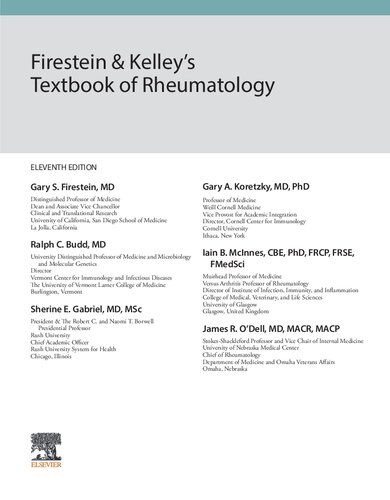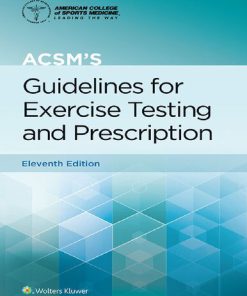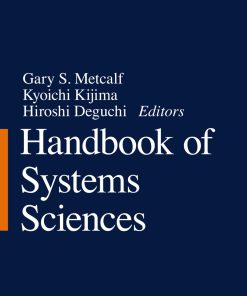Firestein and Kelley s Textbook of Rheumatology 11th Edition by Gary S Firestein, Ralph Budd, Sherine Gabriel, Gary Koretzky, Iain McInnes, James O Dell ISBN 9780323639200 0323639224
$50.00 Original price was: $50.00.$25.00Current price is: $25.00.
Firestein and Kelley s Textbook of Rheumatology 11th Edition by Gary S Firestein, Ralph Budd, Sherine Gabriel, Gary Koretzky, Iain McInnes, James O Dell – Ebook PDF Instant Download/Delivery: 9780323639200 ,0323639224
Full download Firestein and Kelley s Textbook of Rheumatology 11th Edition after payment
Product details:
ISBN 10: 0323639224
ISBN 13: 9780323639200
Author: Gary S Firestein, Ralph Budd, Sherine Gabriel, Gary Koretzky, Iain McInnes, James O Dell
-
Abarca desde la ciencia básica, la inmunología, la anatomía y la fisiología, hasta las pruebas diagnósticas, los procedimientos y los procesos patológicos específicos, e incluye datos clave sobre resultados terapéuticos para tomar decisiones clínicas bien documentadas.
-
Incorpora capítulos nuevos: «Células linfoides innatas y linfocitos citolíticos naturales», «Patogenia de las enfermedades mediadas por inflamasomas», «Bisfosfonatos», «Ecografía en reumatología» y «Evaluación de la artritis monoarticular y poliarticular».
-
Incluye 1.200 ilustraciones de alta calidad, tablas de referencia rápida y fotografías clínicas en color.
-
Comparte el conocimiento y la experiencia de científicos de renombre internacional, entre los que se incluye un nuevo editor, el Dr. Gary A. Koretzky, especialista en inmunología y reumatología.
-
Permite la revisión de los avances en las ciencias básicas y sus aplicaciones clínicas, y constituye una guía fiable basada en la evidencia de todas las enfermedades y los síndromes reumatológicos.
-
Incluye el acceso a la versión electrónica en inglés, que permite consultar el texto completo, las figuras y las referencias bibliográficas de la obra desde diversos dispositivos
Firestein and Kelley s Textbook of Rheumatology 11th Edition Table of contents:
Part 1. Structure and Function of Bone, Joints, and Connective Tissue
1. Biology of the Normal Joint
Classification of Joints
Developmental Biology of the Diarthrodial Joint
Interzone Formation and Joint Cavitation
Cartilage Formation and Endochondral Ossification
Development of Articular Cartilage
Development of the Joint Capsule, Synovial Lining, Menisci, and Intracapsular Ligaments
Development of Nonarticular Joints
Organization and Physiology of the Mature Joint
Synovium
Joint Innervation
Synovial Fluid and Nutrition of Joint Structures
Generation and Clearance of Synovial Fluid
Synovial Fluid as an Indicator of Joint Function
Lubrication and Nutrition of the Articular Cartilage
Mature Articular Cartilage
Subchondral Bone
Tendons
Ligaments
Bursae
Menisci
Conclusion
2. Synovium
Structure
Function
Conclusion
3. Cartilage and Chondrocytes
Introduction
Cartilage Structure
Structure-Function Relationships of Cartilage Matrix Components
Morphology, Classification, and Normal Function of Chondrocytes
Interactions of Chondrocytes With the Extra-cellular Matrix
Angiogenic and Antiangiogenic Factors
Roles of Growth and Differentiation (Anabolic) Factors in Normal Cartilage Metabolism
Epigenetic Regulation of Cartilage Homeostasis
Role of the Chondrocyte in Cartilage Pathology
Conclusion
4. Biology, Physiology, and Morphology of Bone
Structure and Composition of Bone
Conclusion
5. Muscle: Anatomy, Physiology, and Biochemistry
Introduction
Structure
Events During Muscle Contraction
Transmission of Force to the Exterior
Energetics
Fatigue and Recovery
Plasticity
Aging
Conclusion
6. Biomechanics
Introduction
Kinematics
Kinetics
Joint Biomechanics
Joint Constraint and Stability
Mechanical Loading on Tendon
7. Regenerative Medicine and Tissue Engineering
Introduction
Intrinsic Repair
Emerging Clinical Applications Targeting Endogenous Repair
Extrinsic Repair: Current Therapeutic Interventions
Regenerative Medicine and Tissue Engineering in Arthritis
Conclusion
8. Proteinases and Matrix Degradation
Introduction
Extra-cellular Matrix-Degrading Proteinases
Regulation of Proteinase Activity
Inhibition of Proteinases by Endogenous Inhibitors
Part 2. Cells Involved in Autoimmune Diseases and Inflammation
9. Dendritic Cells
Introduction
Dendritic Cell Subsets and Development
New Developments in Dendritic Cell Classification
Impairment of Dendritic Cell Biology in Disease
Immunotherapeutic Strategies and Clinical Trials
Future Directions
10. Mononuclear Phagocytes
Introduction
Steady-State Development of Synovial Macrophages
Transcriptional Regulation of Synovial Macrophages
Synovial Macrophage Production of Cytokines and Chemokines
Conclusion
11. Neutrophils
Overview
Neutrophil Development, Morphology, and Content
Neutrophil Activation and Signal Transduction
Neutrophil Function
Heritable Disorders of Neutrophil Function
Neutrophil Relevance to Rheumatic Disease
Conclusion
12. T Lymphocytes
Introduction
T Cell Development
Peripheral Migration and Homeostatic Proliferation of T Cells
T Cell Subsets
Future Directions
13. B Cells
Introduction
Immunoglobulins: Structure and Function
B Cell Development
Sites of B Cell Homing and Activation
B Cell Activation and Differentiation
Repertoire Selection
B Cell–Mediated Autoimmunity
Conclusion
14. Fibroblasts and Fibroblast-like Synoviocytes
What Is a Fibroblast?
Physiologic Characteristics and Functions of Fibroblasts
Fibroblasts in Rheumatic Diseases
Fibroblast-like Synoviocytes in Rheumatoid Arthritis
Conclusion
15. Mast Cells
Introduction
Basic Biology of Mast Cells
Role of Mast Cells in Health and Disease
Conclusions
16. Innate Lymphoid Cells and Natural Killer Cells
Introduction
Biology of ILCs and NK Cells
ILCs and Potential Contributions to Rheumatologic Disease
Summary
17. Platelets and Megakaryocytes
Introduction
Platelet Structure
Platelet Production
Platelets and Hemostasis
Signaling Pathways in Platelet Activation
The Platelet as an Inflammatory Cell
The Megakaryocyte as an Inflammatory Cell
Platelets, Megakaryocytes, and Rheumatic Diseases
Conclusion
Part 3. Effector Mechanisms in Autoimmunity and Inflammation
18. Principles of Signaling
Introduction
Receptors With Enzymatic Activity
Receptors That Recruit Molecules With Enzymatic Activity
Innate Receptor Signaling
Intra-cellular Receptor Signaling
Adaptor Molecules
Signaling Pathways
Transcription Factors
Conclusion
19. The Immunologic Repercussions of Cell Death
Introduction
Types of Cell Death
Molecular Mechanisms of Caspase Activation
Molecular Pathways of Regulated Necrosis
Cell Death and Immunity
Conclusion and Clinical Potential
20. Innate Immunity
Introduction
Evolutionary Origins of Innate Immunity
Pathogen Recognition by the Innate Immune System
PAMPs and DAMPs: Patterns for Innate Immune Recognition
Effector Mechanisms of Innate Immune Responses
Cell Types Mediating Innate Immunity
Influence of Innate Mechanisms on Adaptive Immunity
Disease Associations Involving Innate Immunity
Future Directions
Connection to the Clinic
21. Adaptive Immunity
Introduction
Phylogenetic Appearance of the Adaptive Immune System
Cardinal Features of the Adaptive Immune System
Cells of the Adaptive Immune System
Development of Adaptive Immune Cells
Anatomic Organization of the Peripheral Adaptive Immune System
Trafficking of Adaptive Immune Cells
Cell-to-Cell Interactions That Support Development of an Immune Response
Consequences of Failed Development or Activation of the Adaptive Immune System
Conclusion
22. Autoimmunity and Tolerance
Introduction
Definition and Classification of Pathogenic Autoimmunity
Animal Models of Autoimmunity
Tolerance Mechanisms
Theories of Autoimmunity
Immunologic Mechanisms of Tissue Inflammation and Dysfunction
Pathophysiology of Autoimmune Rheumatic Diseases
Genetics of Autoimmune Diseases
Sex and Autoimmunity
Microbial and Other Environmental Triggers
Conclusion
23. The Microbiome in Health and Disease
The Human Microbiome
What Is the Microbiome?
Principles of Host-Microbiome Interaction
What Affects the Microbiome?
How Is the Microbiome Determined From a Sample?
How Are Microbiome Data Interpreted?
What Can the Microbiome Be Used for Today?
What Microbiome Principles From Other Areas of Medicine or Biology Can Be Applied to Rheumatology?
How Will the Microbiome Be Useful to Rheumatologists in the Future?
24. Metabolic Regulation of Immunity
Introduction
Metabolic Rewiring in Innate Immunity
Metabolic Rewiring in Adaptive Immunity
Mitochondria and Immunity
Metabolic Interplay in the Immune Microenvironment
Conclusion
25. Genetics of Rheumatic Diseases
Introduction
Evidence for a Genetic Component to Rheumatic Diseases
Study Design
Identification of High-Risk Groups
26. Epigenetics of Rheumatic Diseases
Introduction
Epigenetic Regulation
Epigenetics and the Immune Response
Challenges Faced in Translational Epigenetics Research
Epigenetics in Rheumatic Diseases
Epigenetic Modifications as Biomarkers of Rheumatic Disease
Future Directions
27. Complement System
Introduction
Functions of the Complement System
Terminology Used to Describe Complement and Its Activation Fragments
Activation Pathways
Regulation of Complement Activation
Receptors for Complement Fragments
Functions of the Complement System
Complement Deficiency
Targeted Complement Therapeutics
Complement in Rheumatic Diseases
Conclusion
28. Prostaglandins, Leukotrienes, and Related Compounds
Introduction
Biosynthesis of Eicosanoids
Products of the Cyclooxygenase Pathway
Eicosanoid Receptors
Platelet-Activating Factor
Eicosanoids as Regulators of Inflammation and Immune Responses
Modulation of Eicosanoid Synthesis by Administration of Precursor Fatty Acids
29. Chemokines and Cellular Recruitment
Introduction
Defining Membership of the Chemokine Family
The Chemokine Nomenclature System
The Inflammatory and Homeostatic Chemokine Model
The Chemokine Receptor Family
Atypical Chemokine Receptors
Chemokines in an Evolutionary Context
How Chemokines Attract Cells to Particular In Vivo Destinations
Chemokines and Their Receptors in Disease
Conclusion
30. Angiogenesis
Introduction
Endothelial Cells
31. Cytokines
Introduction
Classification of Cytokines
Assessing Cytokine Function In Vitro and In Vivo
Cytokine Receptors
Regulation of Cytokine Expression
Effector Function of Cytokines
Cytokine Effects Beyond Immune Regulation
Conclusion
32. Experimental Models for Rheumatoid Arthritis
Introduction
Arthritis Caused by Infectious Agents
Arthritis Caused by Bacterial Fragments
Adjuvant-Induced Arthritis
Cartilage Protein-Induced Arthritis
Spontaneous Arthritis
Use of Animal Models
Ethical Considerations
Conclusion
33. Neuronal Regulation of Pain and Inflammation
Introduction
Primary Afferent Fibers
Efferent Functions of Primary Afferent Fibers
Neuronal Regulation of Inflammation in Acute Inflammatory Models
Neuronal Regulation of Inflammation in Chronic Models of Inflammation
Sympathetic Effects on Peripheral Inflammation Are Time Dependent
Parasympathetic Effects on Peripheral Inflammation
Role of Pain in Inflammatory Disease
Part 4. Broad Issues in the Approach to Rheumatic Disease
34. Clinical Research Methods in Rheumatic Disease
Introduction
Measures of Disease Occurrence
Measures of Effect
Data Sources for Research in Rheumatology
Clinical Research Study Designs
Biases in Study Design
Effect Measure Modification
Screening
Conclusion
35. Economic Impact of Arthritis and Rheumatic Conditions
Introduction
Cost-of-Illness Studies of Arthritis and the Rheumatic Conditions
Summary
36. Assessment of Health Outcomes
Introduction
Health Outcome Assessments
What Needs to Be Measured: Defining Measurement Needs
Outcome Measures in Arthritis
Deciding on an Instrument for a Health Outcome Assessment
Examples of Arthritis Instruments
Areas of Growth in Health Outcome Assessment
Conclusion
37. Biomarkers in Rheumatology
Biomarker Definitions and Applications
Defining Patient Heterogeneity
Pitfalls in Translation From Biomarker Discovery to Clinical Utility
Surrogate Biomarkers
Companion Diagnostics Versus CLIA Regulatory Routes
Safety Biomarkers
Biomarkers in Rheumatic Diseases
Biomarkers in Osteoarthritis
Biomarkers in Rheumatoid Arthritis
Biomarkers in Systemic Lupus Erythematosus
Next Horizons for Biomarkers
38. Occupational and Recreational Musculoskeletal Disorders
Introduction
Occupation-Related Musculoskeletal Disorders
Occupation-Related Rheumatic Diseases
Recreation- and Sports-Related Musculoskeletal Disorders
Performing Arts–Related Musculoskeletal Disorders
39. Cardiovascular Risk in Inflammatory Rheumatic Disease
Introduction
Biologic Mechanisms: Relationship Between Inflammation and Cardiovascular Disease
Cardiovascular Morbidity and Mortality in Rheumatoid Arthritis and Systemic Lupus Erythematosus
Risk Factors for Cardiovascular Disease
Cardiovascular Mortality, Morbidity, and Risk Factors in Other Rheumatic Diseases
Managing Cardiovascular Risk in Rheumatic Disease
Cardiovascular Disease Risk Assessment
Conclusion
40. Cancer Risk in Rheumatic Diseases
Introduction
Malignancy in Autoimmune Rheumatic Diseases
Rheumatoid Arthritis
Systemic Lupus Erythematosus
Systemic Sclerosis (Scleroderma)
Idiopathic Inflammatory Myopathy
Sjögren Syndrome
Vasculitis
Seronegative Spondyloarthritis
Cancer Risks Associated With Anti-rheumatic Drug Therapies
Nonbiologic DMARD Therapy
Biologic Response Modifiers
Cancer Screening in Patients With Rheumatic Disease
Conclusion
41. Introduction to Physical Medicine and Rehabilitation
Introduction
Rehabilitation Interventions
Specific Disorders
Alternative, Innovative, and Emerging Therapeutic Approaches
Conclusion
42. Pregnancy and Rheumatic Diseases
Introduction
Interplay of Rheumatic Disease and Pregnancy Physiology
General Principles of Pregnancy and Rheumatic Disease: Pre-pregnancy Assessment
Systemic Lupus Erythematosus
Overlap Syndromes and Undifferentiated Connective Tissue Disease
Sjögren’s Syndrome
Antiphospholipid Antibody
Inflammatory Arthritis
Inflammatory Myositis
Systemic Sclerosis
Vasculitis
Medications During Pregnancy and Breastfeeding
Paternal Medication Use
Pregnancy-Related Issues for Rheumatic Disease Patients
Conclusion
Part 5. Evaluation of Generalized and Localized Symptoms
43. History and Physical Examination of the Musculoskeletal System
History in a Patient With Musculoskeletal Disease
Systematic Method of Examination
Recording the Joint Examination
Interpreting the Joint Examination
Examination of Specific Joints
44. Ultrasound in Rheumatology
Introduction
Technical Aspects
Artifacts
Examination Technique
Ultrasound in Rheumatology Definitions
Rheumatoid Arthritis
Osteoarthritis
Crystalline Arthropathy
Gout
Calcium Pyrophosphate Dihydrate Crystal Deposition
Spondyloarthropathy
Polymyalgia Rheumatica
Giant Cell Arteritis
Sjögren’s Syndrome
Sclerosing Diseases
Non-inflammatory Conditions
Pediatric Rheumatology
Ultrasound in Rheumatology Intervention
Conclusion
45. Evaluation of Monoarticular and Polyarticular Arthritis
Introduction
Approach to the Patient With Arthritis
Synovial or Bone Biopsy
Differential Diagnosis
Formal Criteria and Their Role in Clinical Diagnosis
Preliminary Diagnoses, Working Diagnoses, Presumptive Treatments, Reassessments, and Future Perspectives
46. Skin and Rheumatic Diseases
Diagnosis of Skin Lesions Associated With Rheumatic Diseases
Psoriasis
Reactive Arthritis
Rheumatoid Arthritis
Juvenile Rheumatoid Arthritis/Still’s Disease
Lupus Erythematosus
Neonatal Lupus Syndrome
Sjögren’s Syndrome
Dermatomyositis
Morphea, Systemic Sclerosis, and Other Sclerosing Conditions
Primary Vasculitis Involving the Skin
Infections
Panniculitis
Relapsing Polychondritis
Infiltrative Diseases
Miscellaneous Skin Diseases and Arthritis
47. The Eye and Rheumatic Diseases
Introduction
Ocular Anatomy and Physiology
Ocular Immune Response
Uveitis
Scleritis and Corneal Melt
Orbital Disease
Optic Neuritis
Medication-Related Ocular Toxicity
Conclusion
Part 6. Differential Diagnosis of Regional and Diffuse Musculoskeletal Pain
48. Neck Pain
Epidemiology
Anatomy
Axial Neck Pain
Radiculopathy and Myelopathy
Clinical Features
Diagnostic Evaluation
Differential Diagnosis and Treatment
49. Shoulder Pain
Introduction
Anatomy and Function
Diagnosis
Intrinsic Factors Causing Shoulder Pain
Extrinsic or Regional Factors Causing Shoulder Pain
50. Low Back Pain
Epidemiology
Anatomy
Clinical Evaluation
Differential Diagnosis
Spondylolisthesis
Spinal Stenosis
Diffuse Idiopathic Skeletal Hyperostosis
Treatment
Outcome
Conclusion
51. Hip and Knee Pain
Introduction
Knee Pain
Hip Pain
52. Foot and Ankle Pain
Introduction
Functional Anatomy and Biomechanics
Diagnostic Evaluation
Imaging
Differential Diagnosis of Ankle Pain
Differential Diagnosis of Foot Pain
Nonoperative Treatment
Operative Treatment
Conclusion
53. Hand and Wrist Pain
Introduction
Patient Evaluation
Physical Examination
Common Causes of Hand and Wrist Pain
54. Temporomandibular Joint Pain
Introduction
Arthritis of the Temporomandibular Joint
Internal Derangements
Neoplasms
Myofascial Pain and Dysfunction
Conclusion
55. Fibromyalgia
Introduction
Historical Perspective
Diagnostic Criteria
Epidemiology
Clinical Features
Differential Diagnosis and Comorbidities
Assessment of Severity
Mechanisms of Disease
Social and Psychological Factors
Treatment Approaches
Outcome
Part 7. Diagnostic Tests and Procedures in Rheumatic Diseases
56. Synovial Fluid Analyses, Synovial Biopsy, and Synovial Pathology
Introduction
Synovial Fluid Analysis
Biochemical Analysis of Synovial Fluid
Synovial Biopsy
Synovial Pathology
Synovial Immunohistology
Conclusion
57. Arthrocentesis and Injection of Joints and Soft Tissues
Introduction
Indications, Contraindications, and Potential Complications of Arthrocentesis and Soft Tissue Injections
Drugs and Preparations Used for Injection
Procedures Description
Upper Limb Injections
Lower Limbs Injections
Soft Tissue Injections: Upper Limbs
Soft Tissue Injections: Lower Limbs
Conclusion
58. Anti-nuclear Antibodies
Introduction
History
Relevance of Anti-nuclear Antibodies to Disease Pathogenesis
Methods of Detection
Interpretation of the FANA
Diseases Associated With Anti-nuclear Antibodies
Clinical Utility of Anti-nuclear Antibody Testing
59. Autoantibodies in Rheumatoid Arthritis
Introduction
Citrullination-Associated Autoantibodies
Antibodies to Citrullinated Proteins
Anti-citrullinated Protein Autoantibodies (ACPA)
Antibodies to Peptidylarginine Deiminase Enzymes
The Etiology and Pathogenesis of Citrullination-Associated Autoantibodies
Origin and Pathogenesis of Citrullination-Associated Antibodies
Mechanisms for Citrullination-Associated Autoantigen Production in the Rheumatoid Joint
Antibodies to Chemically Modified Antigens
Nonspecific Rheumatoid Arthritis Autoantibodies
Conclusion
60. Acute Phase Reactants
Introduction
Acute Phase Response
Acute Phase Reactants in the Management of Rheumatic Diseases
Practical Use of Acute Phase Reactants
C-Reactive Protein and Health: Associations with Nonrheumatologic Conditions
61. Imaging in Rheumatic Diseases
Introduction
Radiography
Computed Tomography
Magnetic Resonance Imaging
Other Imaging Modalities
Conclusion
Part 8. Pharmacology of Anti-rheumatic Drugs
62. Therapeutic Targeting of Prostanoids
Introduction
History
Mechanism of Action
Pharmacology and Dosing
Therapeutic Effects
Adverse Effects
Effects of Concomitant Drugs, Diseases, and Aging
Choosing Anti-inflammatory Analgesic Therapy
Conclusion
63. Glucocorticoid Therapy
Introduction
Characteristics of Glucocorticoids
Genomic and Nongenomic Modes of Action
Glucocorticoid Effects on Hypothalamic-Pituitary-Adrenal Axis
Glucocorticoid Effects on the Immune System
Pharmacology and Clinical Considerations
Glucocorticoid Therapy
Adverse Effects and Monitoring
Future Directions
64. Traditional DMARDs: Methotrexate, Leflunomide, Sulfasalazine, Hydroxychloroquine, and Combination Therapies
Methotrexate
Leflunomide
Anti-malarials
Combination DMARD Therapy in Rheumatoid Arthritis
65. Immunosuppressive Drugs
Introduction
Cyclophosphamide
Azathioprine
Mycophenolate Mofetil
Cyclosporine and Tacrolimus
Conclusion
66. Anti-cytokine Therapies
Introduction
Tumor Necrosis Factor
Interleukin-1
Interleukin-6
Interleukin-12/23
Interleukin-17
Dual Cytokine Inhibition
JAK-STAT Pathway
Monitoring When Treating With Cytokine Blockade
Pregnancy and Breastfeeding
Vaccinations
Conclusion
67. Cell-Targeted Biologics and Emerging Targets: Rituximab, Abatacept, and Other Biologics
Introduction
Targeting B Cells
Targeting Co-stimulatory Molecules
Targeting T Cells
Conclusion
68. Intra-cellular Targeting Agents in Rheumatic Disease
Introduction
Signal Transduction Pathways
p38 MAPK Inhibitors
MEK Inhibitors
Spleen Tyrosine Kinase Inhibitors
Janus Kinase Inhibitors
BTK Inhibitors
PI3K Inhibitors
Sphingosine-1-Phosphate Modulators
Phosphodiesterase Inhibitors
Conclusion
69. Urate-Lowering Therapy
Introduction
Nonpharmacologic Treatment of Hyperuricemia
Xanthine Oxidase Inhibition
Febuxostat
Uricosurics
Uricases
Future Directions
70. Bisphosphonates
Introduction
Clinical Pharmacology
Chemistry of Bisphosphonates
Pharmacokinetics
Treatment Effects and Indications
71. Analgesic Agents in Rheumatic Disease
Introduction
Physiology of Pain Perception (the “Pain Experience”)
Pain Classification
Pharmacologic Treatment of Chronic Pain
Opioids
Anti-depressants
Anti-convulsants
Muscle Relaxants
Emerging Targets
72. Nutrition and Rheumatic Diseases
Introduction
Nutrition and Inflammation
Specialized Proresolving Mediators and N-3 Fatty Acids
Nutrition in the Etiology of Rheumatic Diseases
Nutrition in the Management of Rheumatic Diseases
Conclusion
People also search for Firestein and Kelley s Textbook of Rheumatology 11th Edition:
firestein & kelley’s textbook of rheumatology 12th edition
firestein & kelley’s textbook of rheumatology 12th edition pdf
firestein & kelley’s textbook of rheumatology eleventh edition
firestein & kelley’s textbook of rheumatology twelfth edition
firestein & kelley’s textbook of rheumatology 12th
You may also like…
Children's Books - Science Fiction & Fantasy
The Serpent s Fury Royal Guide to Monster Slaying 3 1st Edition Kelley Armstrong Armstrong Kelley
Uncategorized
Hobbies & Games
Medicine - Others
Textbook of Pediatric Rheumatology 8th Edition Ross E Petty Md Phd Frcpc
Science (General) - Science of Science
Politics & Philosophy - Anthropology
Cultural Anthropology An Applied Perspective 11th Edition Gary Ferraro Andreatta Susan












